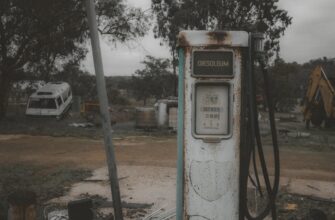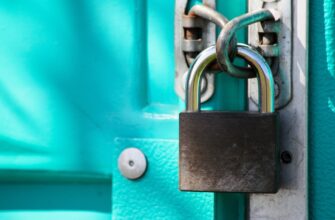- What is an Ethereum Testnet Faucet?
- Why Use Testnets Before Deploying?
- Step-by-Step Guide to Getting Testnet ETH
- Step 1: Set Up a Web3 Wallet
- Step 2: Switch to a Test Network
- Step 3: Copy Your Wallet Address
- Step 4: Use a Faucet Service
- Step 5: Request Test ETH
- Step 6: Confirm Receipt
- Step 7: Start Testing
- Troubleshooting Common Faucet Issues
- Testnet Faucet Best Practices
- Frequently Asked Questions (FAQ)
- Q: Is testnet ETH worth real money?
- Q: Why do faucets require CAPTCHA or social tasks?
- Q: How long does testnet ETH last?
- Q: Can I use the same wallet for mainnet and testnet?
- Q: What if all faucets are dry?
- Q: Are there alternatives to faucets?
What is an Ethereum Testnet Faucet?
An Ethereum testnet faucet is a free service that dispenses “fake” ETH cryptocurrency on Ethereum’s test networks (testnets). Unlike mainnet ETH, testnet ETH has no real-world value but mimics real transaction behavior. Developers use faucets to fuel smart contract testing, dApp debugging, and transaction simulations without spending actual money. Think of it as a practice wallet for blockchain development.
Why Use Testnets Before Deploying?
Testnets like Sepolia and Goerli (phasing out) replicate Ethereum’s environment with zero financial risk. Key benefits include:
- Cost-free experimentation: Avoid burning real ETH on failed transactions
- Realistic testing: Simulate gas fees, contract interactions, and network conditions
- Security: Catch bugs before exposing users to vulnerabilities
- Ecosystem support: Most developer tools (Truffle, Hardhat) integrate seamlessly with testnets
Step-by-Step Guide to Getting Testnet ETH
Step 1: Set Up a Web3 Wallet
Install MetaMask (browser extension/mobile app) and create a wallet. Securely store your seed phrase!
Step 2: Switch to a Test Network
- Open MetaMask and click the network dropdown (default: Ethereum Mainnet)
- Select “Show test networks” and choose Sepolia (recommended) or Goerli
- Confirm the network switch
Step 3: Copy Your Wallet Address
Click your account name in MetaMask to copy your public address (starts with 0x…). This is where faucets send test ETH.
Step 4: Use a Faucet Service
Visit a reliable faucet. Popular options:
- Alchemy Sepolia Faucet (https://sepoliafaucet.com)
- PoW Goerli Faucet (https://goerli-faucet.pk910.de) – requires light mining
- Infura Faucet (requires account)
Step 5: Request Test ETH
- Paste your wallet address into the faucet’s input field
- Complete verification (CAPTCHA or social media check)
- Click “Send ETH” or equivalent button
Step 6: Confirm Receipt
Wait 1-5 minutes. Check MetaMask for the test ETH deposit. Standard faucets dispense 0.1-0.5 ETH.
Step 7: Start Testing
Use your test ETH to deploy contracts via Remix IDE, test dApp interactions, or simulate transactions in development frameworks like Hardhat.
Troubleshooting Common Faucet Issues
- No ETH received? Check network settings, refresh wallet balance, or try another faucet.
- Faucet rate limits? Most allow 1 request per 24 hours per address.
- CAPTCHA errors? Disable ad-blockers or switch browsers.
- Out-of-funds faucet? Community-run faucets exhaust quickly – use Alchemy/Infura for reliability.
Testnet Faucet Best Practices
- Prioritize Sepolia over Goerli (Goerli is deprecated for faucets)
- Request only what you need (0.1 ETH covers 50+ test transactions)
- Bookmark multiple faucets for backup
- Never share private keys – faucets only need public addresses
Frequently Asked Questions (FAQ)
Q: Is testnet ETH worth real money?
A: No. Testnet ETH has no monetary value and can’t be traded or converted to mainnet ETH.
Q: Why do faucets require CAPTCHA or social tasks?
A: To prevent bots from draining resources and ensure ETH goes to real developers.
Q: How long does testnet ETH last?
A: Indefinitely, but testnets occasionally reset. Always refill before major testing.
Q: Can I use the same wallet for mainnet and testnet?
A: Yes, but never send mainnet assets to testnet addresses or vice versa.
Q: What if all faucets are dry?
A: Join Ethereum Discord channels – developers often share ETH in #testnet-request rooms.
Q: Are there alternatives to faucets?
A: Yes! Tools like Hardhat and Foundry can generate test ETH locally for rapid iteration.
Mastering testnet faucets accelerates your Ethereum development journey. By following this guide, you’ll deploy smarter, safer, and more efficient dApps – without ever risking real funds. Happy building!








